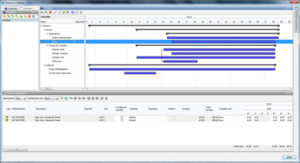
More and more, cost estimation and cost control are being recognized as critical components of total cost management. With growing awareness of their importance, teams involved in project cost management are becoming increasingly knowledgeable about the tools and methods available to them, including the use of cost estimating software.
When it comes to cost estimation, the approach you choose—whether activity-based or resource-based—depends on the specific data and priorities of your project. When a BoQ or MTO is known it makes sense to use the activity-based approach for your estimates. If however, a rough schedule is available then resource-based estimating is also an option. While one department benefits from estimations based on resource-based estimating another will like the approach of the activity-based estimating better. But how do you decide which method aligns best with your team’s needs and goals? What are the challenges in adopting one method over the other?
This article explores the key differences between these approaches, providing insights to help estimators align with project managers and schedulers.
Activity-based estimating
Activity-based estimating stems from the experience one gained from previous jobs. For example, consider the number of activities typically required to install a heat exchanger. With the right cost estimating software, you can develop assemblies easily found in a central depository such as a knowledge base. These assemblies can be descriptive in nature or generated on the fly from parametric models.
Pros of activity-based estimating
The pros are that activity-based estimating can be very fast. When you use mapping technologies for the output of your engineering systems, design sheets, material take off sheets (MTO), or Bill of quantities (BOQ), generating estimates can be a matter of minutes.
When you couple these estimates with best use practices such as allowances, indirect cost, escalation, and contingencies, you really can create comprehensive views of cost. In turn, this could trigger all project controls and cost control facets at an early stage in the project.
Cons of activity-based estimating
The cons of activity-based estimating is that you are never going to be exactly correct with your direct cost since that amount is generated by average experience. Meaning, if you want to do it right, you need to spend time benchmarking those numbers and keeping material prices up to date.
Resource-based estimating
With resource-based estimating, you are not looking at the average number of hours you use for the installation of said heat exchangers. Rather you plan the resource you need by calendars and schedules. Thus, in resource-based estimating, you create all hour-related items in your estimate using schedules.
Pros of resource-based estimating
The pros are that when you use the right estimation software, updating the calendars means updating the hours involved for the items, and thus updating cost. This means that getting the final number right for your estimated hours is easier.
Additionally, this approach is more suited for industries which are highly reliant on getting those numbers right, such as the offshore industry. For instance, when a ship sails late, it most likely affects other numbers. Updating one scheduled activity saves valuable time by updating the entire estimate.
Cons of resource-based estimating
The cons are that attaching all resources to the schedules is quite labor intensive, doing it right does require some skill. The estimate will be on your desk longer before it goes to the other involved parties.

Activity-based or resource-based estimating software: which one to choose?
In general, it is quite easily deductible which of the methods will be preferred by which parties. Your manager will love the speed and accuracy of activity-based estimating, which allows for fast and accurate estimates that can be presented to the board and shareholders. In contrast, your work planners and schedulers most likely prefer the resource-based estimating method.
Rather than declaring a single “best” method, the smart choice is to leverage cost estimating software, like Cleopatra Enterprise, that supports both approaches as well as other cost estimation techniques. Estimators should use activity-based estimating to provide the estimates to the board a.s.a.p. Afterward, they should run towards the work planners and give them access to or have them use the same cost estimation software to adapt to resource-based estimating.
Estimators should have those options and be capable of adapting to both styles quickly. Management, estimators, and work planners are equally important in making your business a success. This means as an estimator, we need to be more creative and adaptive in how we store our data but isn’t that why they call us Cost Engineers!
Cleopatra Enterprise allows you to use your own cost models and techniques, and implement them in a state-of-the-art…
Cost management and cost control are two terms that often get mixed up. If you think about the…
Related resources
5 cost estimation techniques supported by Cleopatra's software
Learn which project cost estimating techniques you can apply with an advanced software tool to develop more accurate cost estimates for your projects.
Learn which project cost estimating techniques you can apply with an advanced software tool to develop more accurate…
Read blog articleHow Enbridge Improved Estimating & Benchmarking with Cleopatra
Using Cleopatra Enterprise, Enbridge has achieved a cost estimation process improvement and implemented benchmarking functionalities, resulting in significant time savings and support in critical business decision making. Discover 4 improvements.
Using Cleopatra Enterprise, Enbridge has achieved a cost estimation process improvement and implemented benchmarking functionalities, resulting in significant…
Read blog article
